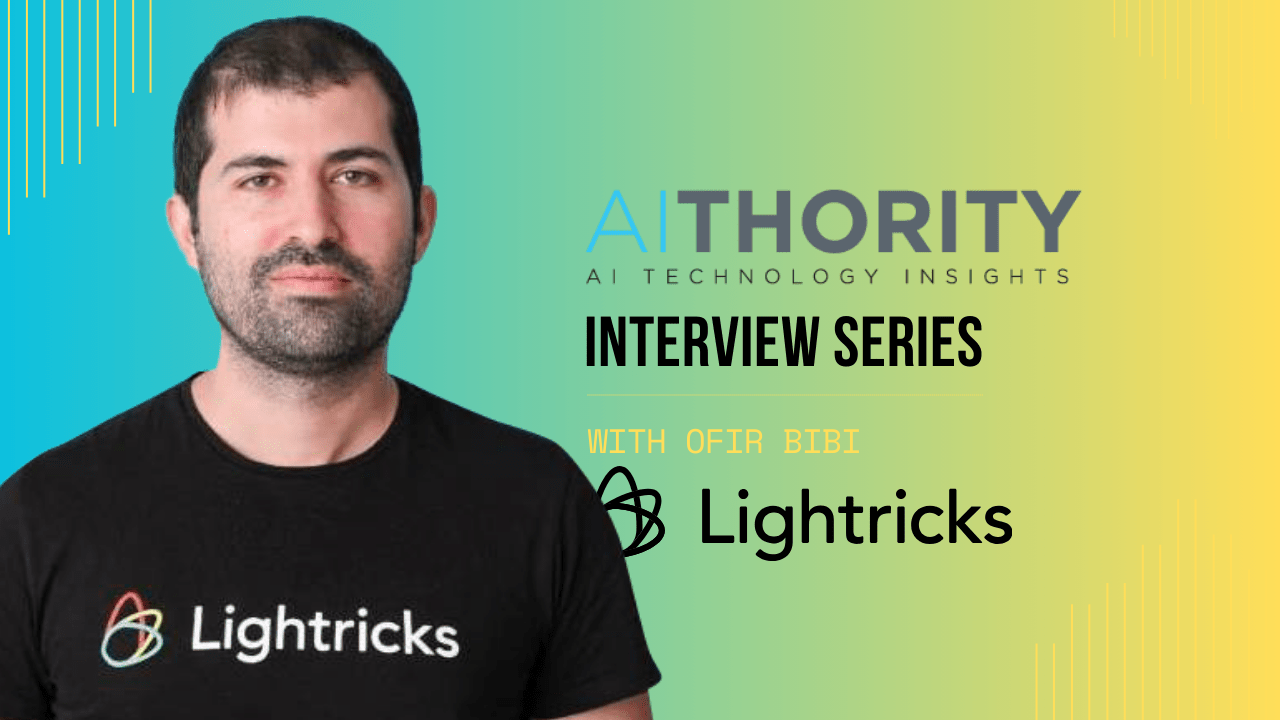AiThority Interview with Ofir Bibi, VP Research at Lightricks

Hi Ofir, please tell us about your current role and how you arrived at Lightricks.
Hi. I currently work as the VP of Research here at Lightricks. In my role, I lead a team of over 40 researchers who are responsible for creating the core features behind our award-winning apps. Our team has always focused on bringing ML solutions to our products, and now with the latest breakthroughs in AI, we have been creating features based on the latest technology at an accelerated pace.
My career has spanned a wide range of research roles over the years, in a variety of different industries. I had heard of Lightricks while spending time at the Hebrew University of Jerusalem, pursuing my doctorate in Neural Computation. I was always interested in computer vision and image processing, and when the opportunity arose for me to join Lightricks, then as a senior researcher, I jumped at it.
I have been with Lightricks for over eight years now.
How important has generative AI become to your company’s suite of apps? Where do you see AI’s biggest impact on the value proposition of these apps for visual content creation?
Generative AI has truly added a new dimension to our apps and the features we offer. Not only have we been able to create new features, but our team has worked to take the already existing features we have, and embedded new technologies to further improve these features.
Additionally, we have to create features extremely quickly to keep up with the ever-changing market, which has been a good challenge for the team.
I think the biggest value proposition that AI offers to visual content apps, is the endless possibilities for creation. It offers users, almost like a sounding board, to try and test different prompts and ideas, and assist them in creating something, even if they don’t have an exact idea of what they want to create.
What has surprised you most about how your user base likes to use the various AI features that you’ve rolled out?
With everything, we have seen our users embrace our new tools, and quickly adapt to what we have to offer. I think the most surprising thing has been that often when we create features, as a company we have a specific use case in mind, and more often than not, our users will create content with features in ways we would have not expected them to be used at all. It’s interesting to follow these use cases, because sometimes they inspire us to take them and create new features.
How have your team’s workflows evolved over the last year or so, by adopting AI-powered developer tools?
At Lightricks, our leadership has encouraged the company to embrace AI tools to better streamline work. In our R&D and research departments, we use tools like Copilot and ChatGPT, to soundboard ideas and create faster turnaround time. Our in-house diffusion models have been used by our creative departments to generate content for design purposes, marketing and even in-app and product content.
What types of product experiments have you been able to run and analyze differently by using AI?
We’ve been able to really expedite the process of creating high-quality features and release a lot of content very quickly. It’s been helpful for hopping on trends, creating trends ourselves and keeping up with social media, offering quick solutions to our users.
In terms of product experiments, because Lightricks has a massive user base, we’re able to easily test features and understand their use cases very quickly and adapt our features and flows based off user needs. It’s not as much that we were unable to create things before AI as much as it is now so prevalent in everything we do.
What is the future of AI-generated content?
We see AI-generated content moving heavily into the video space, allowing both end users and high-level production companies to create content at scale. We have almost totally cracked the world of image generation and photo content, and there is the challenge now to take the future of content creation into the world of video. The future of AI-generated content will also rely heavily on the ease of use. We need to focus on how we make it accessible to our end users.
How do you tackle questions around AI ethics and responsible AI at Lightricks?
We take this topic very seriously and see this as an important conversation. As with everything we do, our aim is to always give our users a holistic and safe experience when using our products, AI or not. We have put a lot of parameters in place to make sure that the content our users generate or create is safe, whether blocking prompts on our users’ side, to also filtering results our features offer. In addition to safety, we are working at creating tools that will be considered fair use for creators, allowing them to create content that they can own and share.
Thank you, Offir! That was fun and we hope to see you back on AiThority.com soon.

Comments are closed.